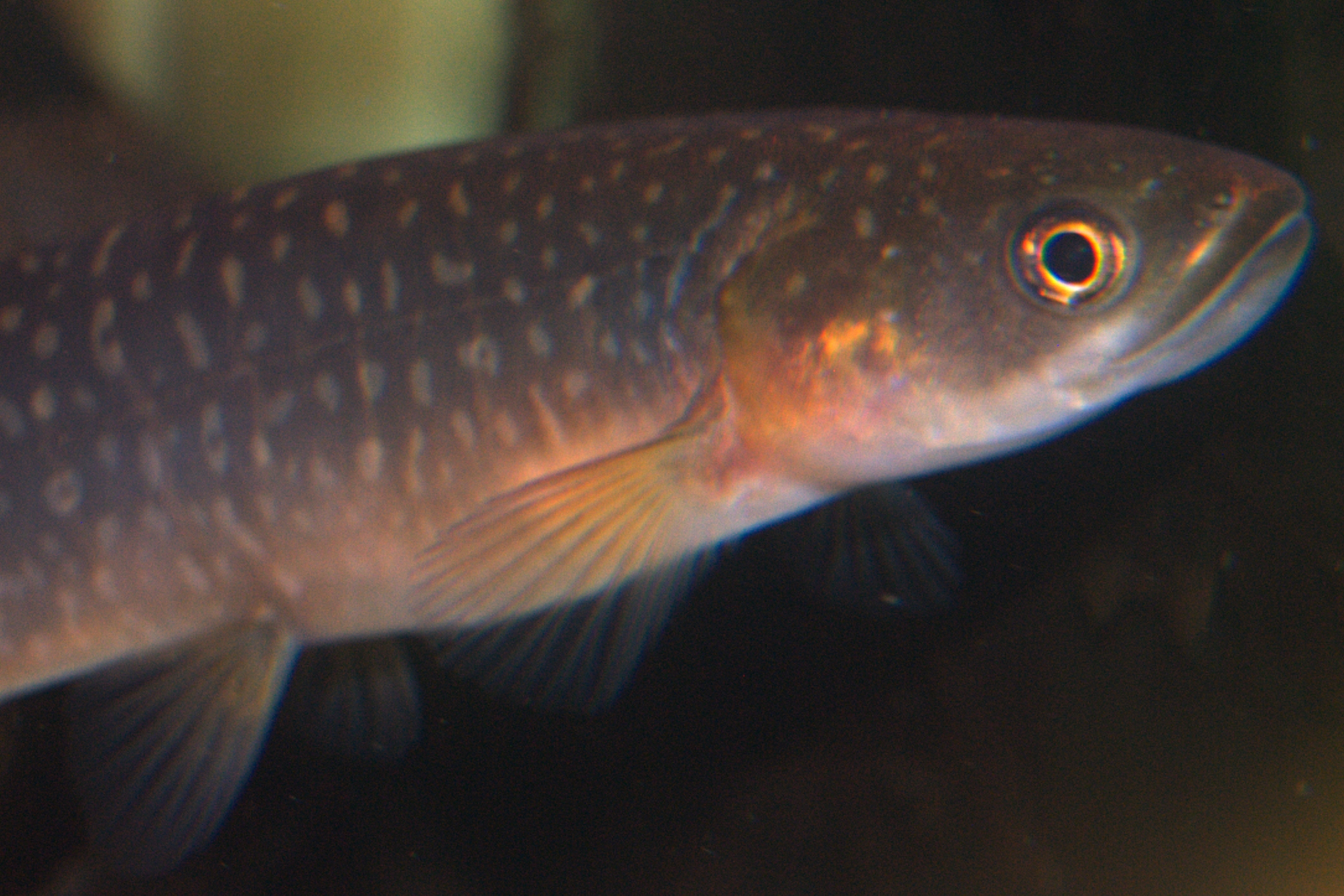Giant kōkopu
(Galaxias argenteus)

Description
The giant kōkopu (Galaxias argenteus) is a threatened species of ray-finned fish in the genus Galaxias, found only in New Zealand. It can reach up to 58 cm (23 in) in length and 2.7 kg (6.0 lb) in weight, making it the largest species in the family Galaxiidae. It is a mainly lowland species, commonly found in slow-flowing streams, wetlands, lakes, and lagoons. Most populations have an amphidromous life cycle, with larvae going to sea soon after hatching and returning about four months later as small juveniles, 4.5–5 cm (1.8-2.0 in). Juvenile giant kōkopu form a small part of the annual whitebait catch. The first species in the family Galaxiidae to be described by scientists, the giant kōkopu was initially placed in the genus Esox (pikes) by Johann Friedrich Gmelin in 1789. Cuvier recognised that it was not a pike and in 1816 coined the genus name Galaxias as a reference to its star-like (galaxy) markings. The genus was later expanded to include numerous other species, most of which lack this pattern. Giant kōkopu are also known as "native trout" or "Māori trout". For many years the standard spelling was "kokopu", without the macron that indicates the first vowel is lengthened in Te Reo Māori, but the spelling "kōkopu" is increasingly frequently used for this New Zealand English loanword. The giant kōkopu commonly grows to 30-40 cm (12-16 in) in total length. Larger individuals are uncommon, but there is a record of one reaching 58 cm (23 in) in length and 2.7 kg (6.0 lb) in weight, which makes this the largest species of galaxiid. Like all galaxiids, giant kōkopu lack scales and have a thick, leathery skin covered with mucus. Their body is very broad, appearing round or square in cross-section, with strong, fleshy fins and a very large mouth. Giant kōkopu are typically olive brown, varying from near-black to pale olive. In adults the body is patterned with pale yellow spots, crescents and lines, markings becoming smaller and more profuse as the fish ages; the patterning begins in juveniles with sparse vertical bars and spots along the lateral line. As the fish grows these markings lengthen and then fade out, while the adult markings fade in. Young giant kokōpu may be confused with small banded kōkopu (Galaxias fasciatus), but giant kōkopu lack a silver mark behind the gills, and their markings never fork or fade out at the top and bottom.
Taxonomic tree:







